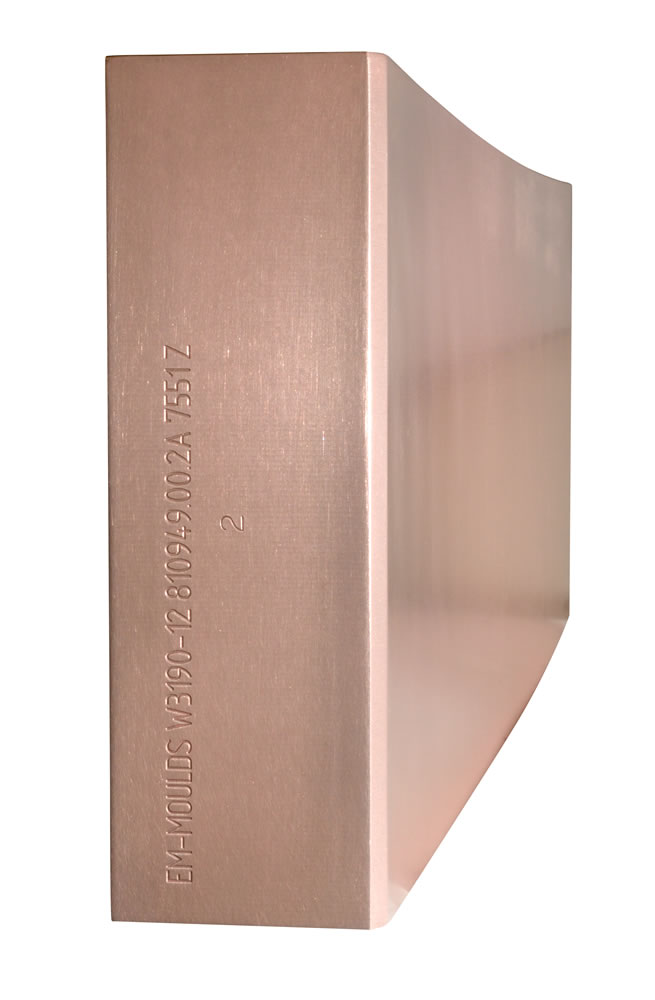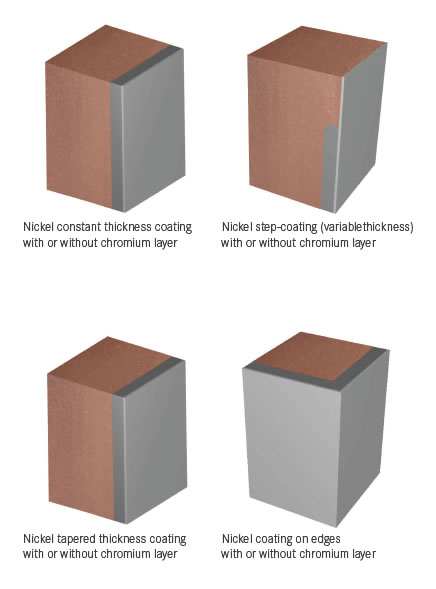PLATE MOULDS
EM MOULDS products range includes plates for blooms, beam blanks and slabs in any alloy.
Special machining such as cooling slots, drilled cooling channels, welded studs, funnel type for thin slab, machining of slots for thermocouple installations can be designed and made.
Plates can be coated with Nickel, Nickel Chromium technology and Nickel Cobalt.


COATINGS FOR PLATE MOULDS
In recent years great importance has been given to studies exploring different types of coatings for plate moulds, and numerous different configurations have been tested; however chromium coating is still widely used for plate moulds for blooms and beam blanks casting, while plate moulds for slabs can be manufactured with different materials, thicknesses and configurations according to customers’ needs.
The chromium-plating of the hot face of mould plates is still widely practised in plants which produce blooms. Such a coating is designed to increase the plate’s wear resistance and to avoid direct contact between the copper wall and the molten steel, which can cause both cracks in the mould plate at the meniscus level, and star cracks on the surface of the steel.
1 mm thick coating of nickel electroplated with uniform thickness across the whole inner mould surface. A 0.035 to 0.050 mm thick nickel coating can also be applied to give additional protection. This solution is an optimal compromise between the need to increase resistance to wear, maintain good heat efficiency at the meniscus, and increase the number of intermediate re-processing steps before a fresh nickel coating is required.
A nickel coating, with thickness ranging from 3 to 6 mm, is electroplated only onto the underside of the hot face. A 0.035 to 0.050 mm thick chromium coating can also be applied to give additional protection. This treatment guarantees a constant and excellent heat exchange at the meniscus. A significant number of intermediate re-processing steps can be undertaken before a fresh nickel coating is required.
A layer of nickel with tapered thickness is electroplated onto the surface. A 0.035 to 0.050 mm thick chromium coating can also be applied to give additional protection. It is recommended that the thickness of the nickel coating not exceed 1.5 mm, as higher values may strongly impact on the heat exchange efficiency. The number of intermediate re-processing steps before a fresh nickel coating is required depends on the nickel coating thickness in the upper part of the plate.
Those plants which are required to change bram widths during the casting process, should give the sides of the lateral plates a nickel coating from 0.5 to 1 mm in thickness, applying, if required, an additional chromium coating for protection. This type of coating promotes smooth sliding of the side plate over the top of the wide plate, and guards against accidental damage.
